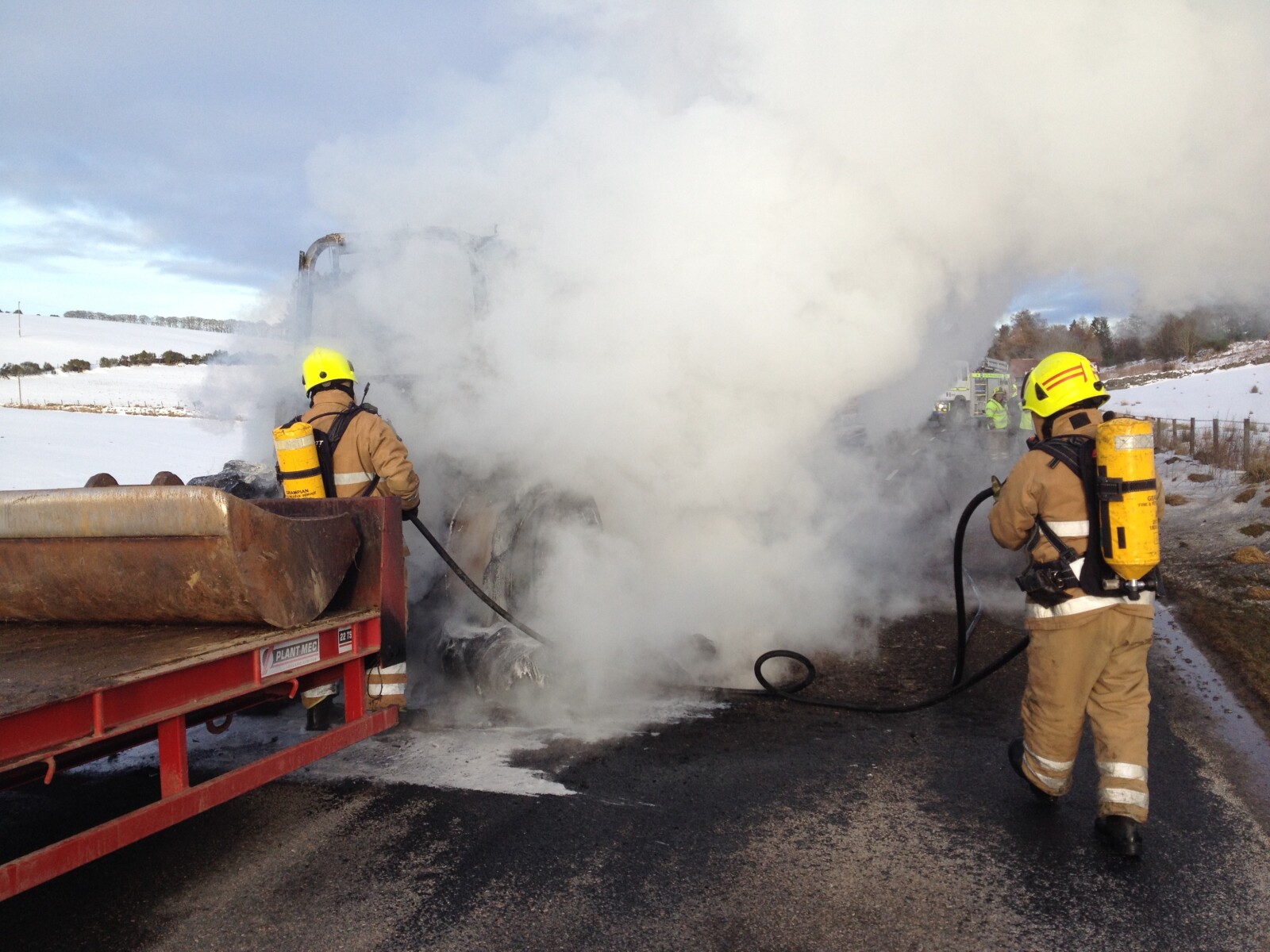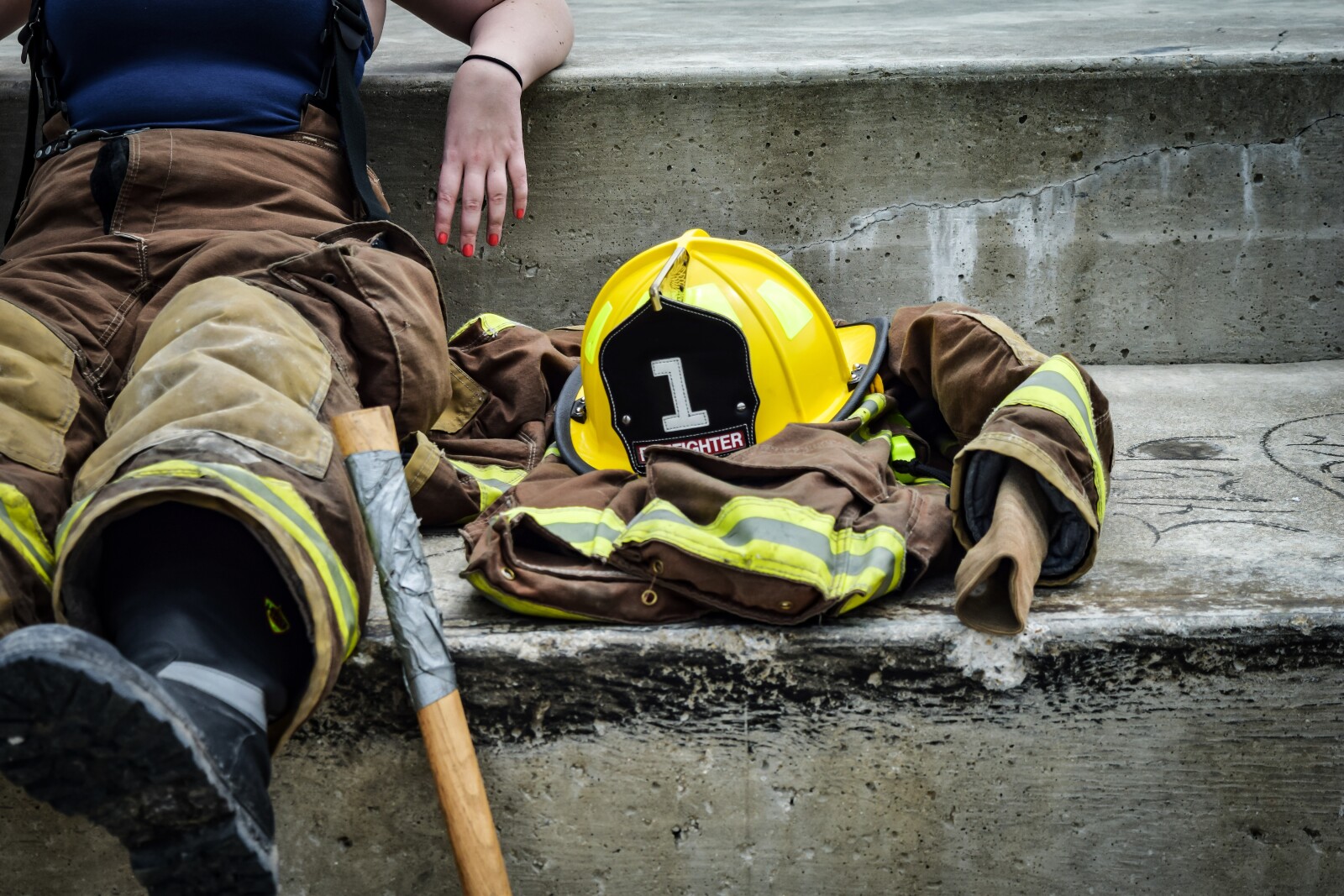AFFF Firefighting Foam Lawsuit: Updates, Settlements, and Trials
Update January 2024:

The Aqueous Film-Forming Foam (AFFF) lawsuits are currently in progress, and the exact settlement amounts are yet to be determined. However, based on the flow of prior MDL litigations and estimates from attorneys, the anticipated settlement amounts can be categorized into tiers based on the severity of the plaintiff's condition and the strength of their case:
- Top-tier plaintiffs, who typically have the strongest cases and serious conditions, are estimated to receive between $200,000 and $500,000
- Second-tier plaintiffs could expect a settlement in the range of $150,000 to $300,000
- Third-tier and lower plaintiffs, typically with weaker claims and less serious conditions, are likely to receive settlement amounts of $75,000 or less
These estimates are based on prior mass tort cases involving AFFF firefighting foam and are not guaranteed amounts. The actual settlement amounts will depend on various factors, including the level of exposure to AFFF, the severity of the illness, long-term prognosis, pain and suffering experienced, and lost earning capacity and wages.
In the past, substantial settlements have been reached in AFFF-related cases. For instance, DuPont and Chemours agreed to pay $670.7 million in 2017, and an Ohio jury ordered DuPont to pay $50 million in March 2020. A $17.5 million class action lawsuit settlement was reached with Johnson Controls, the maker of Tyco Fire Products, which includes PFAS-containing firefighting foam.
It's important to note that these are estimates and the actual settlement amounts may vary. The AFFF lawsuit payout date and the average payout will be announced later.
Key Takeaways
- The number of AFFF lawsuits filed in the MDL has been increasing, with over 100 new cases each month, indicating a significant legal issue.
- Three leading companies have reached a preliminary agreement to address PFAS-related drinking water claims, creating a settlement fund of $1.185 billion.
- The first test trial in the AFFF MDL will feature the case of the City of Stuart v. 3M Co., et al., which may impact the defendants' willingness to settle with a multi-billion dollar global settlement.
- PFAS contamination and its environmental impact are significant factors in the litigation, with estimates of over $30 billion needed for cleanup costs around military bases.
Understanding the AFFF Firefighting Foam Lawsuit

The AFFF firefighting foam lawsuit encompasses numerous claims, with an increasing number of cases filed and a growth rate of nearly 50% in 2022, indicating potential anticipation of a settlement.
Central to this issue is the potential health risks associated with AFFF firefighting foam. Scientific evidence points to a correlation between the foam's primary components, PFAS chemicals, and various health complications. These risks underline the urgent need for stricter regulations on PFAS chemicals in firefighting products.
The current litigation raises awareness of these potential hazards and the importance of regulatory adherence. It also highlights the responsibility of manufacturers and public health entities to ensure the safety of those serving in the firefighting community and the wider public.
Recent Updates in the AFFF Firefighting Foam Lawsuit
Recent developments in the ongoing litigation reveal several key points. First, there has been an increase in the number of cases filed, indicating a growing recognition of the issue and a desire for legal action. Second, there is anticipation of settlements, suggesting that parties may be willing to negotiate and resolve the disputes outside of court. Finally, preparations for the initial test trial are underway, indicating that the legal process is progressing and moving toward a resolution.
The impact of PFAS contamination on local communities remains a significant concern. Legal actions are being pursued against firefighting gear manufacturers, indicating that these companies are being held accountable for their role in the contamination. The establishment of a settlement fund to address PFAS-related drinking water claims further emphasizes the gravity of the issue and the need for financial resources to address the damages caused.
The upcoming test trial involving the City of Stuart serves as a symbol for the struggles faced by many communities dealing with PFAS contamination. This trial will likely shed light on the specific challenges and consequences faced by these communities and may set a precedent for future cases.
The discovery of PFAS in firefighting gear and the subsequent legal actions taken by firefighters highlight the widespread health and environmental consequences of PFAS. This underscores the urgency for resolution and the need for preventative measures to mitigate the harmful effects of PFAS contamination.
Overall, these recent developments in the ongoing litigation and the broader context of PFAS contamination reveal the increasing recognition of the issue, the pursuit of legal action, and the urgent need for resolution and preventative measures.
The Trend and Impact of New Case Filings

Fluctuations in the frequency of new case filings in the ongoing MDL greatly impact the overall trajectory and pace of the litigation process.
A surge in recent legal actions underscores the growing awareness of the long-term effects of AFFF exposure and its potential impact on public health. This trend indicates an increasing recognition of the health implications associated with AFFF use and its environmental persistence.
The rising number of claims also highlights the critical need for comprehensive policies that safeguard individuals and communities from exposure to hazardous substances.
It is worth noting that the outcomes of these legal actions will likely shape future regulatory standards, aiming to minimize the risks associated with AFFF use and protect public health.
The Role of the MDL in the AFFF Lawsuit
Multidistrict litigation plays an important role in expediting numerous related cases through the judicial process, thus serving as an efficient mechanism for managing the mounting number of claims related to contamination from aqueous film-forming foams. The role of the MDL in AFFF litigation is paramount in ensuring a streamlined handling of cases, thereby promoting fairness and consistency in legal outcomes.
The impact of AFFF lawsuits on firefighting gear manufacturers has been considerable, prompting a re-evaluation of their product safety protocols. This not only drives innovation in the industry but also underlines a commitment to the health and safety of users, primarily firefighters.
Ultimately, the MDL's role in the AFFF litigation exemplifies the judicial system's commitment to efficiency, fairness, and service to others.
Key Settlements in AFFF Firefighting Foam Cases

Considerable progress has been observed in the resolution of legal disputes associated with the use of aqueous film-forming agents. Key agreements have been reached between major manufacturing companies and the claimants.
Notably, three leading companies, The Chemours Company, DuPont de Nemours, and Corteva, have agreed to establish a settlement fund of $1.185 billion to address PFAS-related drinking water claims. This key settlement is pending final approval from the United States District Court for the District of South Carolina.
These litigation outcomes, reflecting the outcomes of a complex legal process, demonstrate a commitment to serving the needs of those affected by the misuse of these agents. However, the litigation continues to evolve, indicating the dynamic nature of legal disputes in this field.
The Implications of the Preliminary Agreement With Chemours, Dupont, and Corteva
The preliminary agreement reached with Chemours, Dupont, and Corteva has profound implications for the resolution of PFAS-related drinking water claims. It establishes a substantial financial resource for affected parties and sets a precedent for future legal actions.
The agreement also delineates a clear pathway for the equitable distribution of financial resources to those affected by PFAS contamination. This ensures that compensation reaches those who have been harmed by the contamination.
Additionally, the implications of the settlement agreement extend to impact on future litigation. It sets an important benchmark for compensation in similar cases, which will guide future legal actions and ensure that affected parties receive fair compensation.
This underscores the crucial role such agreements play in the broader context of environmental justice. It highlights the need for vigilance and accountability in industrial processes to prevent future harm and ensure that those responsible are held accountable.
In essence, this agreement signifies a substantial advancement towards remedying past wrongs and fostering a more sustainable future. It provides hope for affected communities and serves as a reminder of the importance of addressing environmental issues in a just and timely manner.
The Influence of Kidde-Fenwal Inc.’s Bankruptcy on the AFFF Lawsuit
The bankruptcy filing by Kidde-Fenwal Inc. has led to its exemption from the upcoming trial, potentially influencing the dynamics of the overall legal proceedings.
The absence of Kidde Fenwal Inc., a major player, from settlement negotiations may have repercussions on potential settlement outcomes. The company's financial instability might result in reduced financial compensation for claimants, thereby potentially hampering the larger goal of serving the affected community.
The overall impact of Kidde Fenwal Inc.'s bankruptcy has yet to be fully understood, but it is anticipated to cause ripples in the existing legal framework.
These developments underline the necessity for continual monitoring and adaptation of strategies to ensure that the interests of those affected by AFFF exposure are effectively represented and supported.
The First Test Trial in the AFFF MDL: An Overview

Following the implications of Kidde-Fenwal Inc.'s bankruptcy on the AFFF lawsuit, attention now shifts to the inaugural test trial in the AFFF MDL, specifically the case of the City of Stuart v. 3M Co., et al.
The value of scientific evidence becomes paramount in this trial as complex questions surrounding PFAS contamination must be addressed. The City of Stuart posits that their water supply system has been adversely affected due to the PFAS in firefighting foam products manufactured by the defendants.
This trial's outcome could potentially influence the defendants' decision to consider a global settlement, thereby underscoring the importance of scientific evidence in establishing the alleged impacts of PFAS contamination on local water supply systems.
Such trials serve as a critical avenue for imparting justice to affected communities.
The Case of City of Stuart V. 3M Co.: a Detailed Analysis
An in-depth examination of the case City of Stuart V. 3M Co. reveals a complex legal battle over alleged PFAS contamination in municipal water supplies. Core issues center around detailed scientific evidence analysis, with a particular focus on the potentially harmful impact of PFAS on human health.
The case also sheds light on potential defense strategies, largely hinging on the interpretation and contestation of scientific data. The defendants' approach may involve attempts to discredit or challenge the validity of the plaintiffs' scientific claims.
This case highlights the influential role of scientific understanding in shaping legal decisions and the need for deep expertise in analyzing complex data. The outcome of this case may set important precedents for future similar lawsuits.
How the Outcome of the First Test Trial May Affect Future Settlements

Potential implications of the initial test trial's outcome may influence the trajectory of future settlements in numerous related litigations. The verdict could set a precedent, thereby affecting the potential settlement amounts in pending and future cases. Should the plaintiff's claim be upheld, this could embolden other litigants and increase the impact on future settlements.
Conversely, a decision favoring the defense could discourage further litigations. Therefore, an understanding of the trial's outcome is imperative in shaping strategies for future litigations.
It is essential for those dedicated to serving others to perceive the potential ramifications, as this could inform their advocacy and service provision, especially in communities impacted by AFFF firefighting foam.
The Environmental Impact of PFAS Contamination
The environmental implications of PFAS contamination are vast, with widespread pollution posing risks to both ecosystems and human health. The contamination, primarily resulting from PFAS-laden firefighting foam, permeates water bodies, thus negatively impacting aquatic biodiversity.
Direct exposure can lead to serious public health concerns, as the compounds are linked to various ailments, including cancer and immune deficiencies. Regulatory actions and proposals regarding PFAS contamination aim to curb further environmental degradation and mitigate health risks.
The Environmental Protection Agency, for instance, has proposed stringent limits on PFAS in drinking water. This proactive regulatory stance is essential in minimizing the mounting health and environmental challenges presented by PFAS contamination, underscoring the importance of policy in protecting public health and the environment.
The Estimated Cleanup Costs and Their Relevance in the Lawsuit
Estimations for the cost of cleaning up PFAS contamination have reached figures over $30 billion. This sizable financial requirement underscores the cleanup costs' relevance in the ongoing legal actions. It directly influences the financial implications for both defendants and claimants.
Indeed, the magnitude of these costs can shape the direction of the litigation. It necessitates comprehensive evaluation and precise allocation of financial resources.
Furthermore, the cleanup costs warrant scrutiny regarding their adequacy and effectiveness. The financial burden of such essential environmental remediation efforts should not be overlooked. It especially impacts the overall resolution of the lawsuit.
This underlines the urgency to address PFAS contamination systematically and equitably.
PFAS in Firefighting Gear: A Growing Concern

Moving from the economic impact of PFAS contamination, attention turns to the growing concern about PFAS presence in firefighting gear.
Research from the National Institute of Standards and Technology reveals a substantial presence of PFAS in textiles used in firefighting gear, spurring legal actions against manufacturers. These manufacturers bear a considerable responsibility for PFAS contamination, posing serious health risks to firefighters.
The Centers for Disease Control and Prevention (CDC) established the National Firefighter Registry (NFR) to monitor and analyze cancer rates among this population, which are notably higher than in the general public. This emphasizes the effectiveness of the NFR in tracking health risks, further stressing the urgency for manufacturers to address PFAS contamination in firefighting gear.
The Legal Actions Initiated by Firefighters Against PFAS
Legal actions initiated by firefighters against manufacturers of PFAS-contaminated gear have recently surged, highlighting the pressing need for industry regulation and accountability.
This surge signifies the escalating concern over firefighters' health risks associated with prolonged exposure to PFAS.
The lawsuits primarily allege that gear manufacturers failed in their duty of care, leading to increased health risks among firefighters.
The National Firefighter Registry has been instrumental in tracking these health concerns, identifying higher cancer rates amongst firefighters compared to the general public.
Such legal actions against gear manufacturers represent a striving for justice, ensuring that those contributing to the health risks faced by firefighters are held accountable, while also advocating for the development of safer firefighting gear.
The Role of the National Firefighter Registry (NFR) for Cancer in PFAS-Related Lawsuits
The previous discussion highlighted the legal actions initiated by firefighters against PFAS. The focus now shifts to the role of the National Firefighter Registry (NFR) in PFAS-related lawsuits.
The NFR, established by the CDC, has been instrumental in tracking and analyzing cancer rates among firefighters. It has been observed that these rates are notably higher compared to the general population.
The registry's importance in these lawsuits is underscored by the fact that it provides empirical evidence of the impact of PFAS on firefighter cancer rates.
These data contribute to the understanding of the epidemiological patterns associated with PFAS exposure, enhancing the ability to serve those affected by advocating for safer alternatives and contributing to the development of effective preventive strategies and policies.
Frequently Asked Questions
What Are the Potential Health Risks Associated With Exposure to AFFF Firefighting Foam?
Exposure to AFFF firefighting foam may result in health risks such as cancer, immune system issues, and endocrine disruption. Utilization of foam alternatives and strict adherence to exposure prevention measures are recommended.
How Are the Companies Involved in the AFFF Firefighting Foam Lawsuit Responding to the Allegations?
Companies implicated in the AFFF firefighting foam lawsuit are employing various strategies, such as damage control measures and demonstrating corporate accountability, to address allegations of environmental and health damage caused by their products.
How Does the Presence of PFAS in Firefighting Gear Impact the Health and Safety of Firefighters?
Exposure to PFAS in firefighting gear poses health risks to firefighters, including elevated cancer rates. Regulatory policies and protection measures for firefighters need to address this critical occupational hazard effectively.
What Are the Possible Effects of PFAS Contamination on Local Water Supplies and Ecosystems?
PFAS contamination in local water supplies and ecosystems can result in consequential ecological and public health risks. Effective PFAS regulation and contamination mitigation strategies are crucial for safeguarding water quality and preserving ecosystem integrity.
What Are the Long-Term Implications of These Lawsuits for the Firefighting Foam Manufacturing Industry?
Long-term implications for the firefighting foam manufacturing industry may include industry-wide repercussions such as financial strain and reputational damage, alongside the potential for stricter environmental and health safety legislation impacts.
Conclusion
The AFFF firefighting foam lawsuit continues to evolve with an increase in cases and settlements.
The estimated cleanup costs highlight the extensive impact of PFAS contamination.
The discovery of PFAS in firefighting gear has led to further legal actions, emphasizing the potential health risks associated with these compounds.
The role of the National Firefighter Registry in PFAS-related lawsuits is anticipated to provide noteworthy insights.




